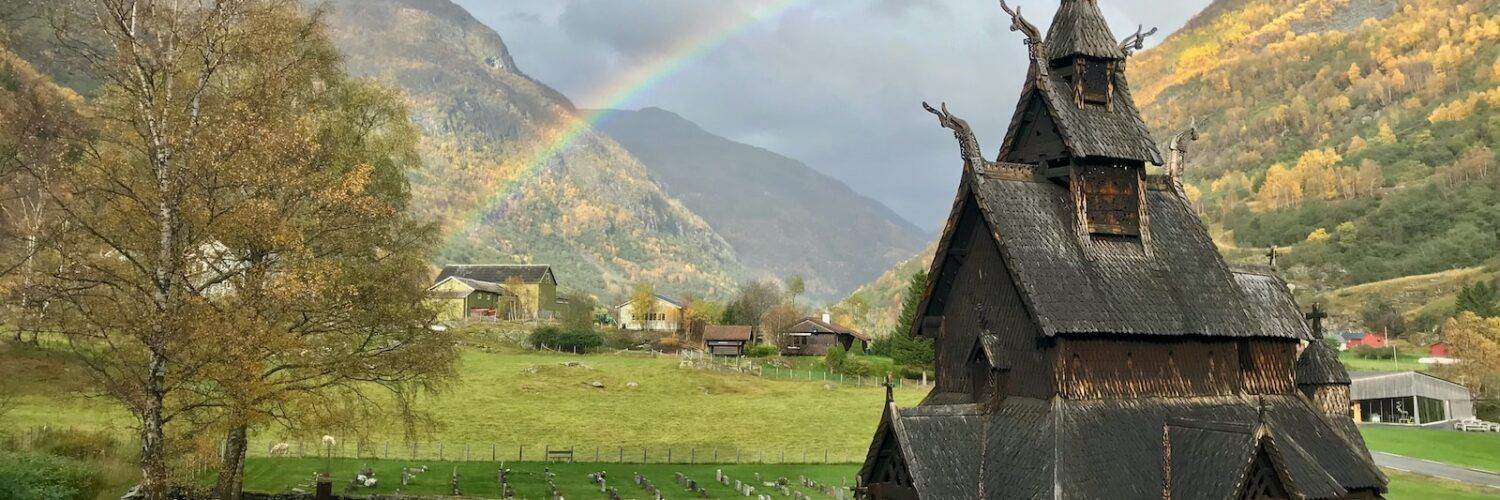Stave churches, or stavkirker in Norwegian, are an integral part of Norway’s architectural and cultural heritage. These unique wooden structures have stood for centuries, showcasing the artistry and craftsmanship of their builders while withstanding harsh climatic conditions. But what is the secret behind their endurance?
In this article, we’ll explore the science and techniques that have allowed these intricate wooden masterpieces to survive through time.

Table of Contents
- A Brief History of Stave Churches
- Construction Techniques & Materials
- Preservation Methods
- Conservation
- Discover Norway’s Magnificent Stave Churches
A Brief History of Stave Churches
The key to the longevity of stave churches lies in their unique construction methods and carefully chosen materials:
“Amidst the whispers of ancient forests, stave churches stand as testament to a time when faith blossomed, bridging distant centuries and preserving sacred echoes of once-bustling congregations.”
Stave churches first appeared during the early Middle Ages, between the 11th and 13th centuries. They were constructed as places of worship after Christianity spread across Scandinavia. At one point, there were over 1,000 stave churches in Norway alone. However, due to factors such as natural decay and changing religious practices, only 28 remain intact today.

Construction Techniques & Materials
Timber Selection
Norwegian builders utilized high-quality timber from old-growth forests for constructing stave churches. The preferred wood was generally pine, which has a dense heartwood containing natural preservatives that make it resistant to rot.
Vertical Load-Bearing Supports
The Staves The name “stave church” derives from the vertical load-bearing supports made from thick wooden columns known as staves (staver in Norwegian). These staves form a strong structural framework that evenly distributes weight along the walls and roof.
Joinery Techniques
One remarkable feature of stave church construction is the absence of metal nails or screws. Instead, skilled craftsmen employed intricate joinery techniques using wooden pegs (or trenails) to secure joints together firmly. This method not only provided flexibility but also accommodated wood’s natural expansion and contraction caused by temperature and humidity changes.
“Crafted with precision and ingenuity, stave churches stand tall as a testament to the harmony between man’s skill and nature’s adaptability.”
Elevated Foundations
Stave churches were built on elevated foundations to prevent ground moisture from seeping into the structure. In many cases, builders used large stones as a base – an effective way of minimizing direct contact between the wooden elements and damp soil.

Preservation Methods
Along with the robust construction techniques, certain preservation methods have contributed to the longevity of stave churches.
“Through the wisdom of ancient techniques, tar’s embrace has shielded stave churches from the ravages of time, preserving these wooden masterpieces for generations to behold.”
Tar Treatment
Builders applied tar, a natural byproduct of burning wood or coal, to protect the exterior surfaces of stave churches. The tar acted as a water repellent, preventing moisture from penetrating and damaging the wood. Regular reapplication of tar over centuries has greatly contributed to the preservation of these architectural gems.

Dragon Heads & Other Carvings
While the intricate carvings adorning stave churches are undoubtedly beautiful, they also serve a practical purpose: directing rainwater away from walls and foundations. The iconic dragon heads that often protrude from roof ridges help channel water away from vulnerable areas, thus adding an extra layer of protection against decay.
Conservation
Efforts in Modern Times Today, Norwegian authorities understand the importance of preserving stave churches for future generations. As such, extensive conservation efforts have been undertaken to restore and maintain these historical treasures. These include structural reinforcements and climate-control systems to ensure their continued survival amidst changing environmental conditions.

“The stave church stands as a testament to human ingenuity, the marriage of masterful craftsmanship and nature’s harmony, an enduring homage to our past and inspiration for the future.”
Discover Norway’s Magnificent Stave Churches
Embark on a journey through time and explore the architectural wonders of Norway’s stave churches. These wooden masterpieces, exemplifying ancient craftsmanship and unique design, continue to captivate visitors from around the world. Here are the top 3 stave churches that you should not miss during your visit to Norway:
- Urnes Stave Church
- Location: Ornes, Luster Municipality, Vestland
- Built: around 1130
- UNESCO World Heritage Site since 1979
- Heddal Stave Church
- Location: Heddal, Notodden Municipality, Vestfold og Telemark
- Built: early 13th century
- The largest stave church in Norway
- Borgund Stave Church
- Location: Borgund, Lærdal Municipality, Vestland
- Built: around 1180
- One of the best-preserved and most visited stave churches in Norway

The enduring nature of Norway’s stave churches can be attributed to a combination of skillful craftsmanship, high-quality materials, ingenious techniques that catered to wood’s natural behavior, and ongoing preservation efforts throughout history. Their remarkable survival is not only an engineering marvel but also a testament to human ingenuity in creating lasting structures that harmonize with nature.
Last Updated on May 23, 2023




